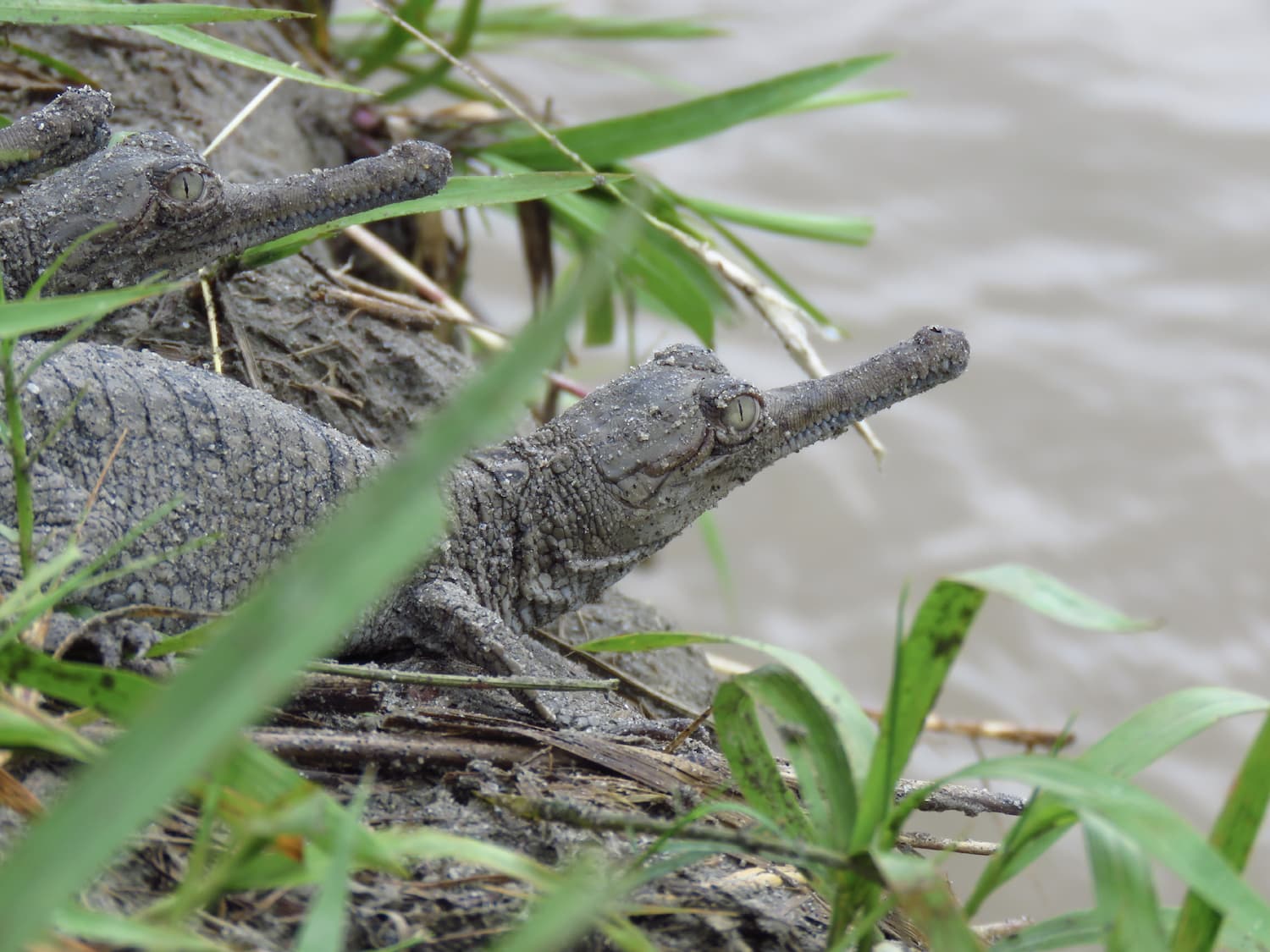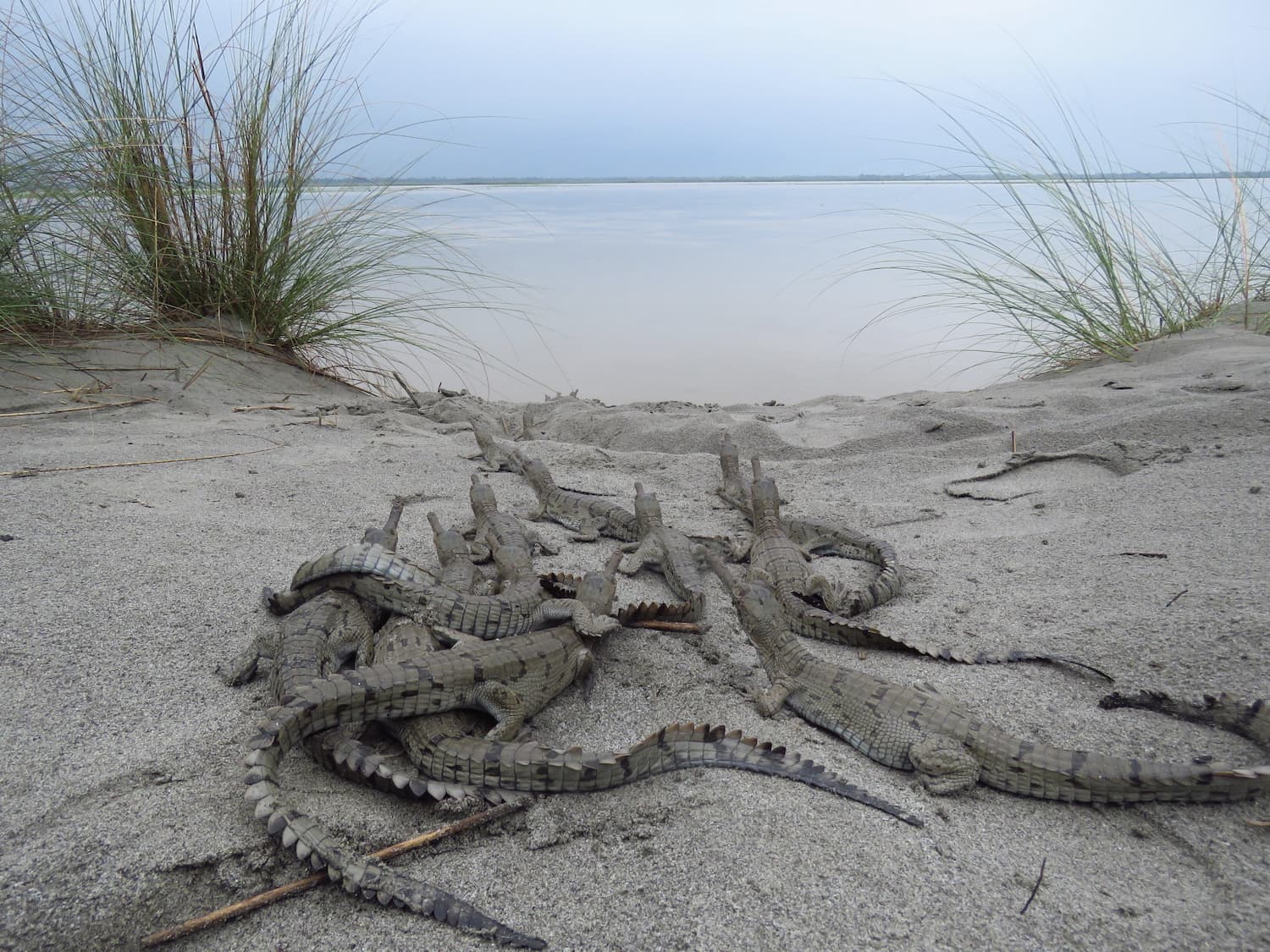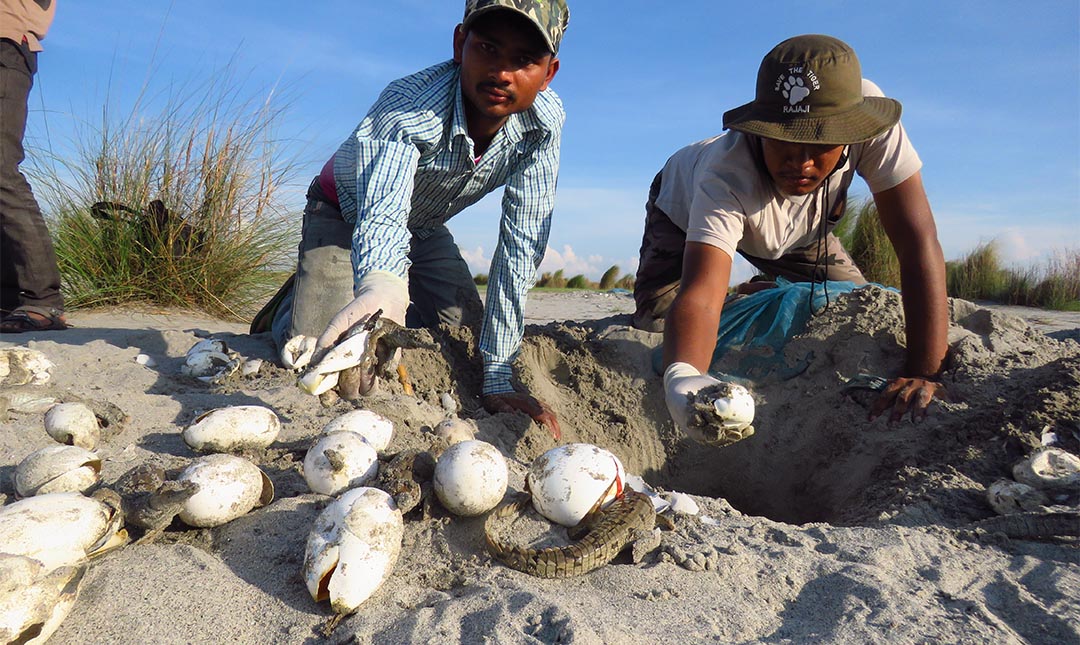
By Dr. Samir Kumar Sinha
Habitat destruction, accidental bycatch, and flooding from agricultural activities have left the Indian gharial critically endangered, with fewer than 900 mature gharials estimated to remain. Last year, the L.A. Zoo provided emergency support to assess and protect the gharial population in India’s Gandak River, the second largest population throughout the species’ range.
It was early March of 2020. The Wildlife Trust of India (WTI) team spotted congregations of breeding gharials in the Gandak River, a transboundary northern tributary of the Ganges. On a 10-day expedition to assess population of the fish-eating crocodiles (as part of the Bihar State Forest Department and WTI project supported by the Los Angeles Zoo and Botanical Gardens): “We identified at least three potential sites female gharials could have selected for nesting,” says Subrat Kumar Behera, the leader of WTI’s survey team.

By the end of March, the COVID-19 pandemic triggered nationwide lockdown in India. The team stationed at WTI Field Station (about 100 kilometers away from the nearest potential nesting site) was clueless on the further course of action. Gharials nest on high sand banks from the last week of March through the first week of April. The team typically spends days and nights on the riverbank to record nesting events and keep vigil to protect the nests against erosion of the sand bank due to precipitation in the catchments and increased river flow.
Unable to visit the area, the WTI team’s last hope was lying on the shoulders of local communities, who had access to the riverbanks even during lockdown. In the past, WTI engaged youth from villages along the river in the Gharial project activities. A few of them are like a part of our team. They had experience assisting the WTI team in shifting nests during the last two years. We contacted them and asked for their help. They successfully located nests in the area at a crucial time when the river started eroding the banks. We were able to provide them with proper real-time guidance over video calls.

Five gharial nests, prone to erosion, were shifted to artificially dug nests to a safer place near the riverbank. The locals monitored and protected the nests. Ultimately, about seventy days passed after the eggs were laid. Theoretically, the eggs were ready to hatch. Meanwhile, the lockdown restrictions were also relieved to the extent that the WTI team could reach the nest sites. Subrat and the nest watchers patted on the nests. Ready to see the world, the hatchlings responded with typical chirps, which they make when mother gharial climbs up to check whether her babies are ready to come out.
The team dug out the eggs. Blunt tiny snouts of baby gharials pierced the eggshells to feel the air and emerged in seconds. They were carried to the actual nest sites, which their mother had been guarding (not knowing that her eggs had been shifted to a safer place). She received the babies and kept them in the crèche before the monsoon rains arrived and forced them to look for a calm side channel of the river. This is the common practice a mother gharial religiously follows to save her babies from the fast-moving river current.
This conservation project, supported by the Los Angeles Zoo, successfully saved a total of 128 gharial babies and sent them back to the wild.

